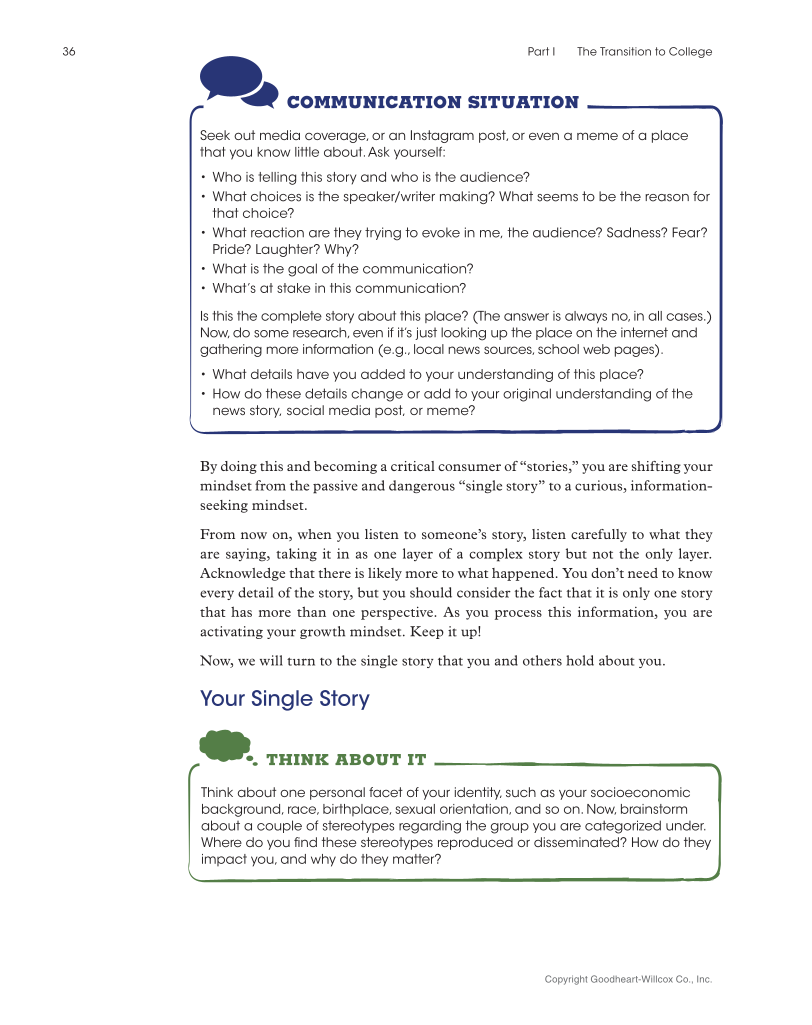36 Part I The Transition to College Copyright Goodheart-Willcox Co., Inc. By doing this and becoming a critical consumer of “stories,” you are shifting your mindset from the passive and dangerous “single story” to a curious, information- seeking mindset. From now on, when you listen to someone’s story, listen carefully to what they are saying, taking it in as one layer of a complex story but not the only layer. Acknowledge that there is likely more to what happened. You don’t need to know every detail of the story, but you should consider the fact that it is only one story that has more than one perspective. As you process this information, you are activating your growth mindset. Keep it up! Now, we will turn to the single story that you and others hold about you. Your Single Story THINK ABOUT IT Think about one personal facet of your identity, such as your socioeconomic background, race, birthplace, sexual orientation, and so on. Now, brainstorm about a couple of stereotypes regarding the group you are categorized under. Where do you find these stereotypes reproduced or disseminated? How do they impact you, and why do they matter? COMMUNICATION SITUATION Seek out media coverage, or an Instagram post, or even a meme of a place that you know little about. Ask yourself: • Who is telling this story and who is the audience? • What choices is the speaker/writer making? What seems to be the reason for that choice? • What reaction are they trying to evoke in me, the audience? Sadness? Fear? Pride? Laughter? Why? • What is the goal of the communication? • What’s at stake in this communication? Is this the complete story about this place? (The answer is always no, in all cases.) Now, do some research, even if it’s just looking up the place on the internet and gathering more information (e.g., local news sources, school web pages). • What details have you added to your understanding of this place? • How do these details change or add to your original understanding of the news story, social media post, or meme?
